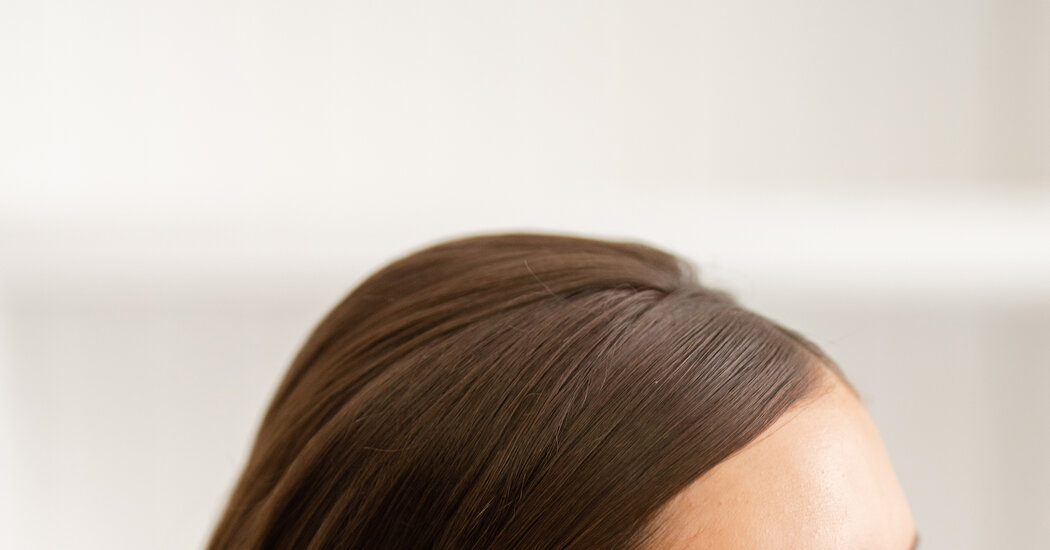
Dri Buono Patel already had her wedding jewelry — diamond cluster earrings, to complement her satin off-the-shoulder gown — picked out for months, but just weeks before the ceremony, she fell in love with pearls. When she saw a pair of drop earrings featuring South Sea pearls, she decided to change her entire jewelry look on the spot.
“I was given a pearl necklace in my childhood, and I’ve always been attracted to their simple elegance,” Ms. Patel, 27, said. “The pearls gave that timeless, traditional vibe.”
For her wedding on June 23, in Moorestown, N.J., Ms. Patel, a clinical engineering services manager, rented pearl earrings from Verstolo, a designer based in New York that offers fine jewelry rentals.
Last fall, the company received more inquiries than usual from brides interested in pearls. The requests became so frequent that the brand decided to release a pearl collection in May, said Lauren Grunstein, the vice president for sales and marketing at Verstolo. Since then, rentals have been booked out months in advance, Ms. Grunstein said, all the way into 2024. The items range in price from $300 to $695 for a three-day rental and are valued at $11,000 to $22,000.
Verstolo’s clients aren’t the only ones clamoring for pearls. More brides and grooms are choosing pearl jewelry and other accessories for wedding events than in previous years.
Alexandra Macon, the founder of Over the Moon, an e-commerce platform focused on weddings, said that she noticed a rise in sales this year for classic pearl strand necklaces on her website, including a two-strand costume piece that retails for $110 and an 18-inch strand of natural baroque pearls with a diamond clasp for $8,200.
The idea of wearing grandmother’s pearls has long been a wedding tradition, but today’s pearl wearers are incorporating the gem in modern ways: in earrings and chokers, veils and dress bodices, and other accessories such as handbags and shoes.
“It’s really a preference for simplicity and understatement that likely began with the pandemic and then evolved into the quiet luxury trend,” Ms. Macon said. “Pearls are having a moment of reinvention.”
Recently, pearls have made appearances on red carpets and runways, and have grown more popular among celebrities, Ms. Macon said. Last July, Jennifer Lopez wore a Ralph Lauren chandelier pearl dress for her wedding reception and paired all of her wedding outfits with pearl jewelry from Mikimoto, a luxury brand. Vogue’s September issue dedicates several pages to the pearl trends on jewelry, handbags and shoes. During Bridal Fashion Week in New York, designers showcased looks from top brands — like Vivienne Westwood and Galia Lahav — featuring pearls sewn into gowns, veils and gloves.
The understated quality of the pearl is what drew Christine Lee, 30, a social media account manager in New York, to the gem. She wore diamond-and-pearl drop earrings for her June wedding in Greenwich, Conn. The iridescent hue of the pearls complemented the color and texture of her Monique Lhuillier gown, she said, without taking the spotlight from her dress or the blue stone ring she wore on her right hand, a family heirloom. To Ms. Lee, pearls “signify elegance and class” because of their enduring appeal.
For some men — including Harry Styles and Marc Jacobs — pearls aren’t so much classic as they are unexpected. Ruben N. Musca, the head of production at a creative agency in Washington, D.C., said that he “splurged” on a strand of cultured pearls to wear at his wedding reception in May 2021. He now wears pearls almost every day. He is inspired by the Formula 1 driver Lewis Hamilton, who is often seen wearing pearl necklaces during news conferences after his races, Mr. Musca said.
“I’ve regularly worn gold Cuban link chains, but they didn’t feel dressy enough to wear with a tuxedo jacket,” said Mr. Musca, 38, who sported a formal navy suit and tie for his wedding. “Pearls add a level of softness to otherwise masculine clothing. It’s a nice contrast from traditional to more modern.”
And pearls are not just for jewelry. Julie Sabatino, a bridal stylist based in New York, is adding pearls to shoes and purses for her brides. The pearl-covered Jimmy Choos from the Sacaria line, she said, are one of her most requested shoes for wedding-related events.
“We are seeing pearls even more on the playful pieces, whether that’s a pearl-encrusted mini dress for the after-party or a pearl clutch for the rehearsal dinner,” Ms. Sabatino said.
Pearls aren’t so much replacing other gems — like diamonds — as they are complementing them, she said. Like other stylists, she has seen an increase in pearl-adorned hair accessories and veils.
“Brides are seeking unique pieces as they scroll the sea of sameness on social media,” she said. “That’s done by mixing in a pearl sneaker.”
The appeal for pearls partly comes from how inexpensive they can be, making them a desirable option for couples with varying budgets.
A vast majority of pearls on the market are cultured pearls, which come from oyster farms in regions such as the South Pacific islands, Japan, Australia and China, said Zameer Kassam, a custom jeweler based in New York. In the 1990s, he said, an oversupply flooded the market and the price per unit fell dramatically.
The pearl market is now expected to grow to $42 billion over the next decade, according to an April report from Allied Market Research.
“Pearls can be one of the most economical choices for fine jewelry,” Mr. Kassam said. “They may not necessarily be valuable, but it doesn’t really matter. It exudes a certain degree of class sophistication without being ostentatious.”






